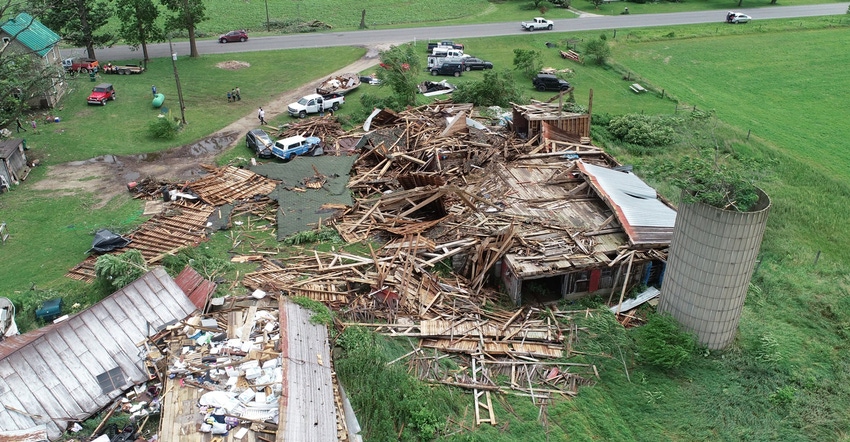
There’s a saying in Michigan: If you don’t like the weather, blink and there’s a good chance it will change. It took longer than a few seconds — but not much.
Michigan has gone from a severe drought across a large swath of the lower part of the state to copious amounts of rainfall, leaving water standing in many fields. In the course of one week, as much as 8 inches of rain fell in parts of Michigan, says Jeff Andresen, state climatologist.
Most of Michigan had a steady, light rain June 25, but it was a line of storms the following day that not only brought abundant rainfall, but also high winds, lightning and tornadoes. Several acres of farmland were damaged, Andresen says.
An EF1 tornado in Remus destroyed two dairy heifer facilities and partially damaged another on the Chapin Family Farm, Michigan Farm Bureau reports. No people were hurt, but the farm’s veterinary clinic was called to attend to some injured cattle.
A total of six tornadoes touched down in Michigan that day, the National Weather Service confirmed on June 28. The most powerful tornado, with winds gusting to 120 mph, stayed on the ground for 7 miles in Huron County’s Port Austin, according to NWS.
There also were two tornadoes confirmed in Ionia County, one in Clare County, and one on the far east side of Kent County. There were no deaths, but injuries were reported, as well as damaged homes, garages and barns.
Not the norm
Andresen called the weather in Michigan, and across the Midwest, extremely unusual.
“The key to what happened was the transport of just literally tons and tons and tons of water vapor from the Gulf of Mexico and the tropics northward into the Midwest on a continuous, daily basis,” he explains.
Andresen notes the rainfall was heaviest across the southern half of the state. “Some places got more than double the normal rainfall for the month of June, which is three to three-and-a-half inches,” he says.
Before this rain event, Michigan started getting dry late last summer. “We started a drier-than-normal pattern, especially across the southern part of the state, that continued all the way until recently,” Andresen says.
“We were running deficits, in some cases of more than 8 inches behind where we should be at this time of the year. For the most part, those deficits are now gone, but they still continue in certain areas, especially the northern Lower Peninsula.”
While the storms were intense at times, most growers welcomed the rain, Andresen says. “I've talked to some growers, and it's like, yeah, we didn't necessarily want all that rain, and we have some ponding and a little bit of flooding here and there, but overall, this is a plus,” he says.
Andresen says the state looks dry through the July 4 holiday weekend and into the following week.
Looking ahead, he expects warmer temperatures. “So, the evaporation rates will be increasing once again by next week,” Andresen says. “I believe we’ll get a modified piece of that incredible heat wave that’s been in the [U.S.] Northwest. The upper air feature that caused that is going to move through here. We may see 90-plus degrees for a max temperature, but a far cry from the 122 degrees F recorded in southern British Columbia on June 29, which is an all-time record — the hottest it’s ever been in the country’s history.”
For a look at impact on crops and an outlook for the season, visit MichiganFarmer.com on July 6.
About the Author(s)
You May Also Like






